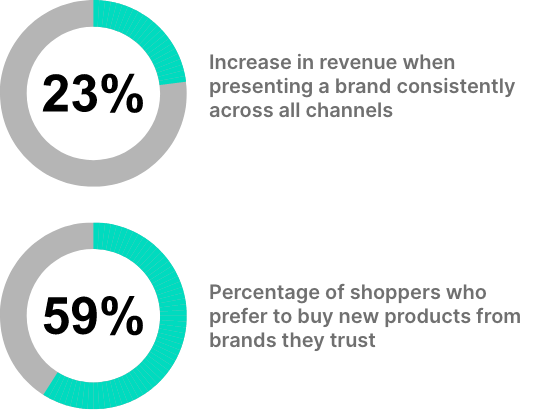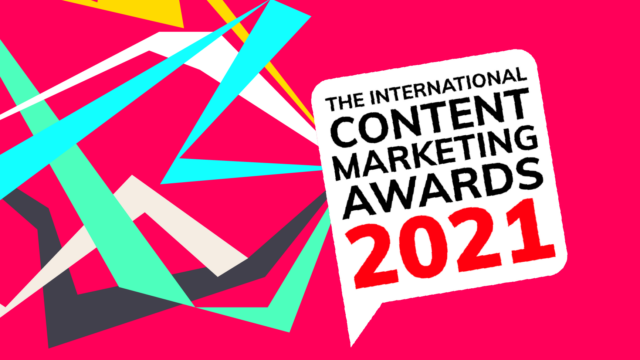A fact wrapped in a story is 22 times more memorable than facts alone.Jennifer Aaker
Why your brand story needs to sit at the heart of your SaaS marketing strategy

B2B tech marketing is tough. Nobody impulse buys a SaaS product, or procures a new software solution just because it coordinates well with a handful of old favorites in their platform wardrobe. And with experts telling us a transaction might require 7, 21 or 84 (yes, really) touchpoints, the pressure on marketers to drive the ‘quality’ aspect of Marketing Qualified Leads is immense.
Many early SaaS businesses prioritise marketing over branding. And within the vastness of what ‘marketing’ means, they often prioritise the easier-to-understand tactical stuff over bigger strategic thinking. This is often because tactical marketing, particularly the digital stuff, offers countless opportunities to measure and track its performance, and generates plenty of data. Naturally, data, however flawed, means so much more to tech-leaders than the woolliness of brand-metrics, and presents the illusion, at least, of what’s working and what isn’t.
Yet, this reliance on tactical marketing alone will soon start to limit your growth potential. You see, marketing, in this form at least, is like your OPEX budget, a hygiene factor for your business. It’s about ‘keeping the lights on’ today, not reaching for the opportunities approaching tomorrow.
The limitation with hygiene factors is that they are soulless. They don’t connect with people where it counts most – in their heart. Data doesn’t have a personality. Branding on the other hand is your CAPEX of communication; the keystone investment that provides the strong foundation for your growth and evolution, connecting on a human level. Investing in your brand strategy at the right moment is a crucial, but often under prioritised and mistimed step in a SaaS business strategy. If this is something you would like to explore, as the founding brand strategist at Cite, I am here to help when the moment is right for you.
The right brand strategy has the power to add value to all marketing activities and all levels of the marketing funnel, and whilst it requires a short-term investment, it will continue to yield returns for the life of your business. I explore how, below.

Awareness
Having a brand story to tell makes it easier to connect on an emotional level. And according to a recent survey by Motista, customers who have an emotional relationship with a brand have three times higher lifetime value and will likely recommend the company at a rate of 71%, instead of the average of 45%.
Or as Jennifer Aaker of Stamford University once stated:
Consideration
Being a start-up can lead to doubt in a prospect’s mind. Will you be around in a year’s time? Are you as good as you claim to be? Having a strong brand and story shows your commitment and demonstrates to customers (and investors) that you know what you are doing, and that you are here to stay.
Conversion
Companies with a strong brand experience a higher conversion rate – simples! Why? Well, because of one of the most basic fundamentals of commerce: people prefer to buy from other people they know, or whom at least feel like they know. So, without a brand personality, and a story, and a purpose… well, you’re just another stranger.

Retention
When new ventures first take off, the sales pipeline frequently takes longer to develop than originally anticipated, and pressure quickly mounts on the sales teams. It can be difficult adjusting to constant changes, while at the same time trying to deliver a consistent customer experience and brand message. The stakes are high, and far too many great business ideas have floundered at this stage. In your fast-evolving world, a strong and authentic brand for everyone to align with provides essential stability and perspective. Heck, it provides sanity!
Expansion and innovation
No successful SaaS venture is an island. Growth and development inevitably involves strategic partnerships and alliances of some form or other. Whether your next partnership is with an investor, sales channel or even a rival you’ve been eyeing up to take-over, it’s much easier to make a move when you’re armed with a clear brand strategy aiding your decision-making framework.
Not to mention employee engagement and happiness

A compelling brand plays a significant factor in why senior level executives choose to work for a company. Simon Sinek calls this starting with your ‘why?’. Why do you exist? What do you do and how do you do it? Where do you stand on corporate responsibility? In a post-pandemic world, having solid answers to these questions and ensuring you can clearly and consistently communicate these is more important than ever. This means turning your values into more than words by developing a compelling and purposeful brand that is demonstrated through consistent behaviours and communications to all stakeholders.
Your brand is as much about how you attract the right clients as it is about how you attract and retain the right talent. It’s about how your people live, breathe, and experience your organisation every day. Without clarity around your ‘why?’, your teams will struggle to find the satisfaction and motivation to keep pushing your business in the direction you need for rapid-growth. In short, your brand is what will evolve your culture, and that’s essential, as this Harvard Business Review article explains.
Anchor your vision and mission and make sure the team ‘feel it’
I get it. Making an investment in your brand can feel like a bit of a leap, and if, as a CEO, you have limited experience in this space, it might push you beyond your comfort zone. However, the right brand can anchor your vision and mission, providing you with the structure to ensure that all of your stakeholders not only ‘get it’ but more importantly ‘feel it’ too. There are over 25,000 SaaS businesses in the world, so making sure yours stands out is certain to pay off as fresh clients, investors and talent pick you out from the busy crowd – reassured by their immediate understanding of who you are, what you offer, and what you stand for.



